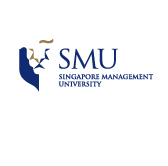Reviews: Architectures of knowledge: Firms, capabilities and communities
Abstract
Audiences are constantly bombarded by a whole host of bland catchphrases. Indeed, their verygeneration is viewed as a necessary part of the art of modern media communication. Complexand contested issues are forcibly reduced to snappy and memorable phrases so as to be quicklydigested by an apparently impatient and inattentive audience. In some respects capturing theattention of the audience is more important than the precision of the statement. If we were tosurvey the most frequently uttered phrases, some of the following would very likely be in the topten: `Markets are more competitive than ever', `we live in a truly globalized world', `people are ourbest assets', and `knowledge is the most important competitive asset of the modern organization'.These phrases not only reflect some apparent reality but also often represent the zeitgeist in thatthey capture the popular mood about some feature of organizational life. In this respect theyarticulate what is believed to be currently fashionable. Academic knowledge is not immune tothese processes. In recent years there has been growing interest in the notion that managementideas and techniques are subject to swings in fashion in the same way that aesthetic aspects of lifesuch as clothing styles, hair length, music tastes, furniture design, and so forth are characterizedby surges of popularity and then decline.


